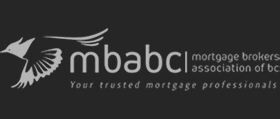 For many years now people have been purchasing properties in Canada as a second home or as an investment in large numbers. With the recent Winter Olympics just over, the number of enquiries on how to finance such a purchase has exploded.
For many years now people have been purchasing properties in Canada as a second home or as an investment in large numbers. With the recent Winter Olympics just over, the number of enquiries on how to finance such a purchase has exploded.
I am going to go over this here. Please note that there are more favorable rules for our American purchasers which you can read here Financing For Americans Purchasing In Canada
As it is difficult to easily verify income and credit for buyers from other countries most mortgage lenders in Canada will not finance these types of purchases. Generally only a few of the mainstream banks will provide these types of loans.
So how much can you get?
The main rule of thumb is 65% of the value of the property. I would caution that if you want to buy a property over $1 million in value that it is highly UNLIKELY that you will get 65%. Most lenders will apply a “sliding scale” to larger loans to reduce their risks on higher end properties. A typical example of a “sliding scale” would be to use a formula such as “75% of the first $500,000 and 50% for the reminder of the value of the property” to determine the maximum loan they would be inclined to do. This is the same for Canadians so no they are not making a special rule just for non-residents!
What documentation is needed?
- We always begin with an application that must be completed disclosing fully your income from abroad, assets and liabilities.
- As previously indicated income verification is quite difficult as documentation varies widely from country to country. Therefore, in most cases this is waived or not a requirement. This is why the loan percentage is lower.
- A satisfactory bank reference letter will be required. This would be a signed and dated letter from the bank you mainly deal with from your home country stating how long you have been a customer along with comments on how you have used credit in the past.
- A three month history of your bank account would be required to confirm your downpayment. Anti-money laundering laws are very stringent in Canada so the three month history would be used to view any “unusually large and irregular deposits”.
- A Canadian bank account must be opened from where the mortgage payments can be automatically withdrawn from. You can do this after the mortgage is approved.
That is it!!!
Extra tip:
I generally don’t like to push one particular bank/lender as each applicant has different needs. However, for non-resident purchasers I do suggest that if you are in a country with HSBC Banks to see if you can become a “Premier’ client with them. HSBC is one of the lenders in Canada doing mortgages for non-residents and as a “Premier” client with them it has been my experiece that we can get higher loan amounts and things are simplified somewhat as the underwriters here in Canada can contact your branch wherever it is in the world.
Please note that the above is a general guideline and each application may result in additional criteria being required.
As always your comments or questions are welcome.





